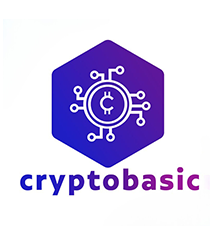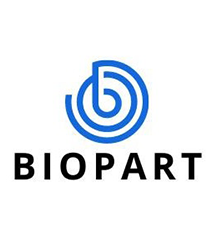
Kopalnie Krypto Team - Tuesday 3 October 2023
Decentralized stablecoin from CircuitDAO
This is the final part of the series of articles in which we delve into the topic of stablecoins on the Chia Network blockchain. This time we will discuss the emerging stablecoin protocol, which, if everything goes well, will appear on the Chia blockchain. The previous two publications discussing the stablecoin issue have equipped us with potent knowledge, making understanding the aforementioned protocol not difficult at all. The goal is near – this is the final stretch.
Meet CircuitDAO
Do you remember the AAVE lending protocol, which we wrote about in one of the earlier articles? CircuitDAO is something very similar and although it is based on loans, it was not created as a pure lending protocol.
The intention of the CircuitDAO creators is to create a decentralized stablecoin protocol. This protocol is being developed on the Chia Network blockchain and is the source of Bytecash (BYC) tokens. They are intended to maintain a value close to the US dollar. In other words, Bytecash is meant to be nothing more than a stablecoin living on the Chia blockchain. Under the hood, BYC is actually a CAT token (Chia Asset Token), so it uses the basic mechanisms of the ecosystem.
As we mentioned above, CircuitDAO resembles the AAVE lending protocol. This means that everyone will be able to use the CircuitDAO protocol, and obtaining BYC tokens will work on a lending basis.
CircuitDAO connects with the user's Chia wallet, thereby granting it permissions to lock funds as collateral, and also to withdraw specific assets from the wallet in the event of liquidating loans.
What is Bytecash?
We described the not entirely successful beginnings of stablecoins in the Chia ecosystem in the previous article in this series. For a reminder: there was a stablecoin called USDS issued by the Stably platform on the Chia blockchain. The collateral for this stablecoin was held by a trustee – Prime Trust. Unfortunately, it supposedly lost the private keys containing client assets, leading to a series of questionable decisions. In the end, Prime Trust declared bankruptcy, and the USDS stablecoins lost their value.
What can we deduce from this? First: there is currently no stablecoin implementation on the Chia blockchain, so it is not fully flexible in terms of payments. Second: past events have taught us that so-called centralized stablecoins are prone to a painful fall.
The creators of CircuitDAO noticed the problems related to the previous implementations of stablecoins on the Chia blockchain, directing their project towards full decentralization – similarly to the AAVE protocol. Therefore, CircuitDAO opted for a loan system fully operating on the blockchain. This will allow maintaining its openness and decentralization.
CircuitDAO is a fully transparent protocol, as all operations take place on the blockchain and are enforced by smart contracts. There is no centralized entity managing the deposit, and the only way to recover one's collateral is to repay the Bytecash loan.
How does CircuitDAO work in practice?
Almost identically to the AAVE lending protocol. First and foremost, we provide our XCH to CircuitDAO as collateral. In return, we can borrow BYC stablecoins. As you can probably guess, we will not be able to borrow Bytecash tokens equivalent to our collateral. In the case of the CircuitDAO protocol, we also deal with over-collateralization of the loan. The maximum amount of BYC that can be borrowed is controlled by the liquidation ratio. For example, if it is 150%, then for XCH worth 600 dollars, we can borrow 400 dollars in BYC stablecoins. However, the creators of the CircuitDAO protocol do not recommend borrowing the maximum possible amount. It's better to leave oneself a safety buffer and take out slightly fewer Bytecash tokens. This way, we avoid liquidating our collateral in case the XCH price drops sharply.
Each loan should be repaid and the same is true for BYC. Users can do this at any time. They must repay the borrowed amount (principal) and pay a stabilization fee (interest), which increases as the loan remains unpaid. After repaying the loan, the corresponding Bytecash tokens are burned (taken out of circulation), and the collateral returns to the borrower. Loans can be repaid in full or in part.
What determines the stabilization fee?
Let's start with the fact that CircuitDAO is not only a protocol. It is also a decentralized autonomous organization (DAO), where decisions are made collectively by its members. Members have a significant impact on the functioning of the protocol, and they can propose changes or vote on them. This means that they also have an impact on stabilization fees.
The stabilization fee is influenced by a number of factors, primarily the demand for BYC and the overall collateralization of the system. If the demand for BYC increases, the stabilization fee should also increase, encouraging users to repay their loans and reducing the overall BYC supply. If the system is under-collateralized, the stabilization fee should increase as well, encouraging users to repay their loans and improving the system's collateralization ratio.
CircuitDAO and security
According to the creators of CircuitDAO, a key priority of the project is security. They know very well that one mistake or loophole in the code can lead to a disaster in the world of decentralized finance (DeFi). Therefore, the code of the CircuitDAO protocol is being developed with particular care, and the team wants to subject it to several independent audits before launching the protocol.
In addition to standard security practices, the creators of CircuitDAO will also use a time delay mechanism. This means that any changes to the protocol will not be introduced immediately, but after a certain period of time. This will give users the opportunity to withdraw their collateral in case they do not agree with the proposed changes. Also, this time delay acts as an additional layer of protection against potential attacks on the protocol.
Summary
CircuitDAO aims to create a decentralized stablecoin protocol on the Chia Network blockchain. This protocol would allow users to borrow Bytecash (BYC) tokens, stablecoins pegged to the US dollar, using their XCH as collateral. CircuitDAO works on a similar principle to the AAVE lending protocol. The intention behind CircuitDAO is to eliminate the problems related to previous centralized stablecoin implementations, opting for a system that operates entirely on the blockchain, ensuring its openness and decentralization.
Despite the sad story related to USDS stablecoins, CircuitDAO brings hope for a stable and decentralized stablecoin on the Chia blockchain. All thanks to the commitment and diligence of its creators, who are putting a lot of emphasis on transparency, security, and decentralized management through a DAO structure.
It's worth keeping an eye on the further development of CircuitDAO and the emergence of Bytecash in the Chia Network ecosystem.





















